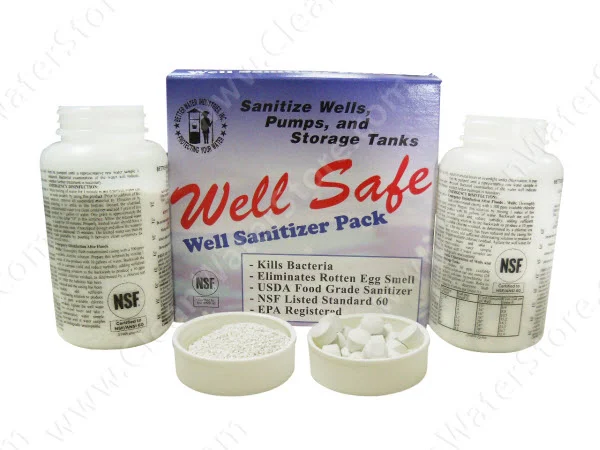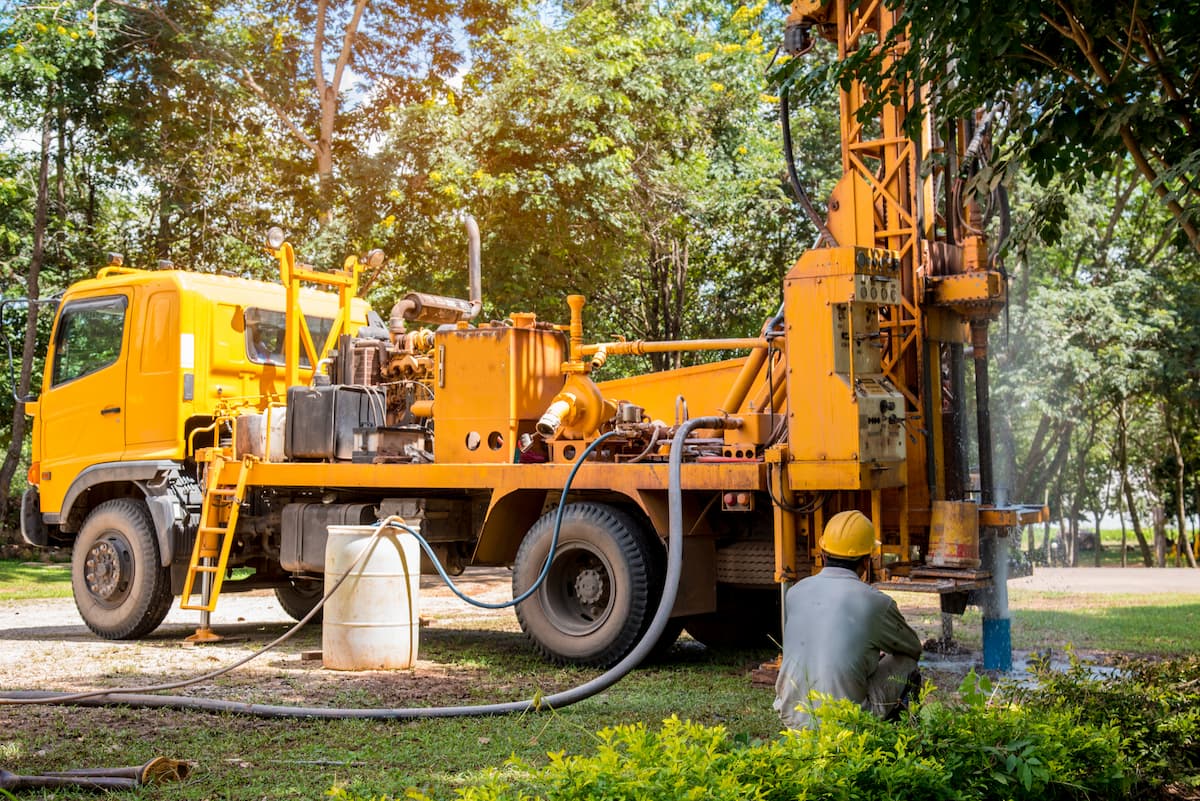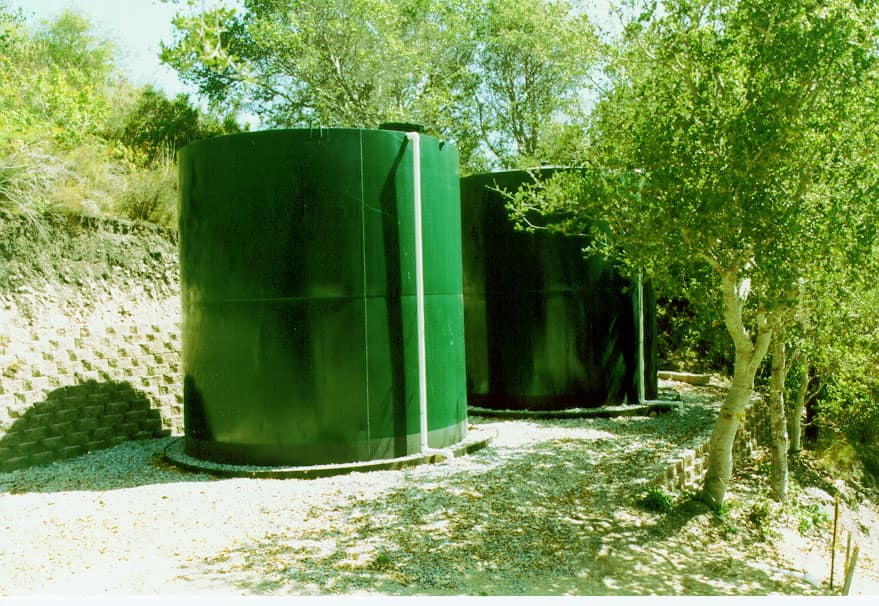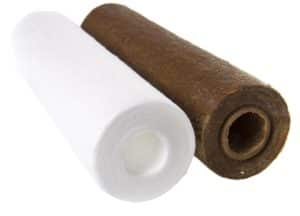How To Eliminate Odors in Your Well Water
Podcast: Play in new window | Download
Subscribe: RSS
On this latest installment of the Clean Water Made Easy Podcast, I talk about how to eliminate odors in well water. I also go over how to identify odors in well water and then walk listeners through the basics steps of eliminating these same odors. As with other issues we’ve discussed, causes may be surprising, but solutions to eliminate odors in your well water are not complicated.
What You’ll Hear in this episode:
1. Kinds of odor in well water
2. What causes these odors?
3. The 4 basic methods of eliminating odor in well water
4. The 3 low-cost methods of eliminating odor
5. What types of water filters are best for treating odors
6. Dangers of hydrogen sulfide in water
7. Ideal water PH
8. What causes rusty water?
9. The importance of doing a water analysis
10. Easy tests you can do at home to analyze your water
11. How to do a physical inspection of your water
12. What happens when you aerate water?
13. Which oxidizer is the most economical?
14. Ways of removing bacteria in water.
15. What is the most affordable method of treating odor and bacteria?
Eliminate Odors in Well Water
Hello! Thanks again for tuning in to the Clean Water Made Easy podcast. Episode #6. My name is Gerry Bulfin. I’m a Water Treatment Contractor and WQA Certified Master Water Specialist. Hey I hope you’re having a great day wherever you’re listening. You know this podcast series is here to help you learn all about well water, water treatment systems, how wells work, and how to improve the quality of your well water.
Free Book Download
In today’s episode, we’re going to cover the basics of how to eliminate odor in well water, particularly rotten egg odor and we’ll talk about the other kinds of odors that folks run into as well.
Some years ago I wrote a book called The Definitive Guide to Well Water Treatment. It’s being sold on Amazon, we update it every year and you know one section of that book, How to Remove Odors in Well Water, is actually one of the most downloaded guides.
I have that separately as a guide and for listeners of this podcast, I’m offering it to you for free. The How to Remove Odors from Well Water is an easy to follow guide, a handy checklist, step by step lists and guides and pictures and useful information all about removing odor from well water.
It covers a lot of what we’ll talk about in today’s episode. Although it’s more in-depth that you can take your time and look at what section pertains to you that kind of thing.
You can get this free guide by texting the word ODORGUIDE to 44222 or you can go on website cleanwaterstore.com/podcasts and find this episode and you can get it from there. So again if you want it might be easy just text the word ODORGUIDE to 44222 and we’ll get that going to you.
Podcast subtopics
In this episode, we’re going to cover: What is the cause of the odor in my well water? What’s the best way to eliminate odor without spending a lot of money? What types of filters or systems are out there to treat odors? We’ll also cover how you can run a little test at home and see what approach would work to eliminate odors in your well water without spending any money.
Rotten Egg Odor
So the most common odor that we run into is rotten egg odor which is hydrogen sulfide gas. It has a very distinctive rotten egg odor and it may be especially present in those homes running hot water but you can find it in cold and hot water. This kind of water discolors coffee, tea, and other beverages and it alters the appearance and taste of cooked foods. Truly a nuisance. It’s not usually a health risk at concentrations found in household water but it can be very toxic at higher levels. Usually the gas can be detected long before it reaches harmful concentrations but at higher concentrations is fatal and poisonous. Well these concentrations are not common. If the gases are released in a confined area they can cause nausea, illness and in extreme cases, death.

You know it reminds me when we were working on a project down in Monterey County. We’re based in Northern California and it was a small community and they had a new well coming online. There was horrific hydrogen sulfide, it was even hard for us to even analyze for but in the end we figured it was somewhere between 80 and 100 parts per million.
This was so bad that when the flow switch and storage tank turned the well on, a cloud of hydrogen sulfide gas came out and gave us extreme headaches and we had to run from it.
It can get bad, that was a tricky system to deal with but in the end we did end up fixing it. Anyway hydrogen sulfide dissolved in water can corrode plumbing metals, such as iron, steel, copper, brass, so at times you’ll see corrosion. Corrosion of iron and steel form ferric sulfide, or black water, so sometimes folks with hydrogen sulfide will see black water. Could be from manganese, which causes water to turn black or leave black stains. But oftentimes you’ll get a little bit of iron in the water, iron sulfide, and you’ll get ferric sulfide, it gets black.
Where odor come from: Causes
Where does it come from? Well, iron bacteria and sulfur bacteria present in groundwater is the most common source. Bacteria use iron and sulfur as an energy source and chemically changes the sulfates to produce hydrogen sulfide. These bacteria use sulfur available from decaying plants, rocks, soil and often thrive in an iron-rich environment. That’s why folks say irony water, rusty water and they have hydrogen sulfide too. Harmless non toxic bacteria normally exist in oxygen-deficient environment such as deep wells or plumbing systems. Hydrogen sulfide gas may also be present in wells drilled in shale or sandstone, coal or in oil fields. It is a big problem for the petroleum industry. Hydrogen sulfide is normally found in wells and can also enter surface water through springs where it quickly escape in the atmosphere.
Often water heaters can become a source of hydrogen sulfide. As a matter of fact, many folks have the odor in just their hot water. A lot of folks on city water run into this problem when there’s a very low chlorine residual. They will have problems with their magnesium anode rods reacting with the sulfate in the water and it gives off hydrogen suldife gas.
Other causes of odor in the water especially when it’s cucumber odor, or sewage odor, or some folks say it’s fuel oil odor – these could be from iron or manganese. Again different types of bacteria metabolize the iron and manganese along with sulfate to create these weird odors . But there’s always the chance that septic tanks as well are causing the problem or there is actual real well contamination. In other words it smells like fuel because it is fuel. That possibility is pretty rare.
What to Do
First, you need to do a water analysis. It’s very important even if you know you just got hydrogen sulfide. It’s good to know what the pH of the water is, good to know if there is any iron or manganese, and good to just do a basic general mineral analysis. It is a good idea once a year to have your water tested for coliform bacteria. That’s a good time to do it, just so you know if you have coliform as well as odor. So there’s different factors as far to as what type of treatment you decide to do and it’s useful to know what the basic water chemistry is.
Okay, what to do? Well then the first thing you do after you get the water test or when you’re getting your water tested is to do a toilet tank inspection. This was in episode 4 but basically you do a physical inspection of your well, your pipes, and your toilet tank. It’s very easy to do and i's very useful. A lot of times it’s hard to know, where is the odor coming from?
I mean, you just assume it’s coming from your well, but it may not be. You can run the water outside from a hose bib or a faucet outside if you can. Or if there’s a way to get water right from the well before it goes into the house, sometimes it’s possible, sometimes not. But if you have that setup you want to run the cold well water and just make sure you’re getting water right from the well and put it in a 5-gallon bucket and just give it a smell. If you’ve been living there for a while, and you think you might have gotten used to the sulfur smell, which is very common, you might want someone else do it.
Eliminate Odors in Well Water
A friend, maybe your favorite brother in law, just have someone else come over and give it a smell to see if the odor is coming from the well. Usually you can tell. So then you can compare that to the water heater odor. Does the hot water have an odor? It can happen where folks will have no odor in the well, no odor in the hot water downstairs, but odor in one or more taps upstairs or for instance in a bathroom that is usually not used very much. So these bacteria sit in pipes and create hydrogen sulfide gas. It takes time. Usually it works better if the water is undisturbed. So it is sitting there, and there’s a biofilm of bacteria in the pipes and it lives and grows on the sulfate and metabolizes sulfate, iron, or manganese and it lives, grows and dies and it gives off hydrogen sulfide gas .
So that’s why a lot of times folks go to a lake house or a weekend home, and first thing when you turn on the water it smells horrible. Then after they run the water awhile, it’s fine. That’s because the bacteria have had a chance to do their job and create this terrible odor. So, first look in the toilet tank, and see what it looks like. Is it clean? Is it black? Is there sediment in it? It just kind of gives you a good idea, because like I discussed in Episode 4, the toilet tank is a good representation of what’s happening with your cold water. You know nobody hardly cleans the toilet so you can go in there and say: Yeah I see what’s going on here. Maybe there’s nothing going on. Or maybe you can see the water is bubbly, and/or black, that’s a sign you might have iron or sulfur bacteria along with this odor problem.
How to Eliminate Odors
Okay. So the next step is: How do I eliminate the odors? Well, odors are best eliminated by first applying an oxidizer. What is an oxidizer? Chlorine, hydrogen peroxide, ozone, or the oxygen in air are all oxidizers. And in most cases, usually you apply the oxidizer and then you run it through a filter of some kind. In general that’s the best way to do it. Now, other folks will say, well, hey, I got my fridge carbon filter on my refrigerator icemaker and the water smells terrible coming out of my kitchen faucet but in the refrigerator it’s fine, so I’m going to get a carbon filter.
And actually it does makes sense and in fact, carbon will remove the hydrogen sulfide but it doesn’t last very long. If you were to put a whole house carbon filter on your house, in order to get a big enough one that wouldn’t restrict your flow rate, you’d need say, half a cubic foot or a cubic foot of carbon, and literally sometimes that can last a month or two. Or 3 or 4 months. Definitely less than a year and all of a sudden you got to dump out the carbon and start over.
If you get a cartridge filter, you might have to change that literally every month, or every 2 or 3 weeks. It gets very expensive. The other problem with carbon is, especially in a cartridge, is that there probably is some bacteria in the well water, even if it does not have coliform, and so you get these heterotrophic bacteria growing and breeding in the carbon and they can give off slime and then you get pressure lost. It’s not very healthy either to have carbon breeding bacteria in your filter. It’s not the best so generally we don’t recommend carbon cartridges for the whole house. Exemption could be if you do have a weekend home or lake house that you rarely use, you could just pop in a cartridge when you’re there. That’s one possibility. It’s easy and low cost but it’s not the best way to do it.
The 4 popular and relatively low-cost ways, at least 3 of them are low-cost, to eliminate odor are:
1) aeration, 2) chlorination, or 3) hydrogen peroxide, or 4) ozone gas.
Aeration is a very well established and very popular method to eliminate odor from water. There are 3 main ways typical for residential application. One way is you have a Venturi, which is located in the pipe, so when the pressure drops through the Venturi and it sucks in air. You’re introducing air into the water but this is not the best way to do it. This method used to be more popular than now because they’re pretty reliable but the problem with it is that they do cause pressure loss.
Another way to do it is to literally aerate water into a storage tank. That’s really a good way to do it although then you have to buy storage tank, then you need a booster pump and pressure tank but you can aerate the water and spray the water into the storage tank. Oftentimes, if the odor is slightly bad and you have a big enough storage tank, say at least 500 gallons and up to 5000 gallons. Then that’s often all you need, and you don’t even need a filter if the odor is very slight. If the odor is more than just slight, even if you’re aerating the storage tank you usually need some kind of filter afterwards. That’s why we recommend oxidation – some kind of oxidizer like air, chlorine, hydrogen peroxide, or ozone and afterwards a filter because you need to filter out the particles that have been oxidized. So it was clear in the water, and now it may be black or gray, or if you have iron or manganese, it may be rust or black. So anyway, it’s a 2-step process.
One thing is you can try aeration at home. As a matter of fact you can try the next several methods I am going to go over as well. But for aeration, all you have to do is get your 5-gallon bucket and just spray the water into the bucket and you could wait 5 minutes then see if it smells. Then wait an hour, see if it smell. And you can kind of tell how it’s working.
There’s another aeration method that is pretty popular now because it is very simple and it includes aeration and filtration. Some people call it an air charger filter and that's what we call it too. You can get an air charger iron filter which has an iron filter media in it. Or you can get an air charger sulfur filter which has catalytic carbon in it. Getting back to the discussion about carbon, standard carbon does not last as long in the removal of hydrogen sulfide as catalytic carbon. Catalytic carbon has a catalyst on it. So that if there’s a little bit of oxygen in the water, so you need aeration first, then the hydrogen sulfide rapidly oxidizes right on the catalytic carbon filter media. And since it is a catalyst it doesn’t get used up like it would if it was standard carbon. This chemical process is happening right on the media. That generally works better, and lasts a lot longer. Some of our folks get their air charger sulfur filters over the years and those things can last years before you dump out the carbon, sometimes 4 or 5 years. So it’s much cheaper than using a carbon cartridge and it’s really effective and you don’t have an air compressor or a storage tank. It’s all in one tank. If there’s bacteria in the water, however, you might want to put a UV sterilizer before the carbon filter just to make sure that no bacteria could be breeding in the carbon.
They do work right and they’re very simple to install and no maintenance, there’s just no cartridges. The way they work is that it maintains a head of air inside the filter tank. So we have this thing that looks like a water softener, single tank, doesn’t use any salt, but when it goes into a backwash it backwashes and cleans itself but it maintains the air at the top of the tank. There are pictures of these in the guide too. Anyway, you can kinda envision it – a tank where water goes through a head of air and then it goes through the carbon and at that point the water coming out is totally clean. If there is any sediment, it backwashes out. Okay so that basically covers aeration. There’s aeration like I said by Venturi, and there’s aeration by the air charger type. You can actually get the air compressor type system that actually blows air into the water. It goes usually at top and is coupled with a filter tank. That’s usually a 2-tank process.
Chlorination
Okay moving on to perhaps favorite method – it’s chlorine, chlorine bleach. Everybody hates chlorine, they don't want to drink chlorine, they don't want to bathe in chlorine if they can avoid it. The thing is, it’s very low-cost and it’s really effective and you can filter it out so you don’t have to drink any or have any chlorine residual in your house. Chlorine is very effective and not only gets rid of odors but it also kills bacteria. So it’s a really good disinfectant. So it kills bacteria that cause the odors. So sometimes what can happen is you got a situation where you got a well loaded with sulfur bacteria or iron bacteria, and yeah you can aerate it to get rid of the odor, but the bacteria still lives in the water. So what happens is they go in the house, you go on vacation, come back, terrible odor again. Chlorine gets rid of that problem because basically you’re chlorinating the water. This is done automatically with a little metering pump that pumps in a little bit of chlorine every time the well pump turns on and then that runs into a little contact tank and then goes through a carbon filter, or if you have iron you could use an iron filter that works with chlorine.
That way, you have no odor, no iron, no manganese, and no sediment. Chlorination works the best we found. Ozone actually works the best, I'll be getting to that in a minute but it is super expensive. Chlorine is the best low cost way to go. With aeration, you think about it, you are adding air into the water, whether you are spraying it into the tank, or most of the time you use an air compressor or air charger or an air injector to put the air in the tank under pressure, you literally got air in the water so you draw glass from the kitchen, it might look white because it has little bit of dissolved gas in the water. Even though there’s mechanisms to de-aerate the water, or gas off the air, air can still be an issue. No big deal but it’s just one thing . Chlorine does not put any air in the water, it disinfects the water and really works great on the odor. We found more and more that chlorination is the good way to go.
Hydrogen Peroxide
The next way is hydrogen peroxide. You use the same system especially if it has a degassing valve for the chlorinator pump. You can actually try either one. You can try chlorine, you can try peroxide.
Peroxide is nice because when you’re adding peroxide into the water, you don’t have a chlorine residual. When you add hydrogen peroxide into the water, basically it breaks down pretty quickly into just oxygen and water. The chlorine bleach is sodium hypochlorite. So that’s a little bit of sodium, it’s very small amount, just a couple of milligrams so it is not a big issue but you are putting something into the water. But with peroxide, you don’t have that. A lot of people like hydrogen peroxide, especially when you have high levels of hydrogen sulfide. In other words, the more hydrogen sulfide you have, the more oxidizer you need. So whether it’s air, chlorine, peroxide, you have to add enough to neutralize this odor. So if you get into a situation with extreme hydrogen sulfide, you have to use industrial grade hydrogen peroxide.
That’s the only way to treat it because you couldn’t add enough chlorine to do it. The other problem with it, and that’s enough reason to get a water test, is that if you have a high pH, if your what above 8, chlorine is not very effective. So ideally you want your pH to be fairly neutral or even a little less than neutral, but it works fine if it’s between 7 or 7.5. But if it’s 8 or above 8, chlorine can be very hard to use because very little of the chlorine you’re adding into the water will work. But with hydrogen peroxide, it does seem to work better You still have to add a lot of it, but you end up with water and oxygen. No big deal. In other words it doesn’t affect the taste is what I was getting that.
We tried different tests and we had many customers say the same thing. For some customers, it does work better to use hydrogen peroxide rather than chlorine. Just from a tasting point. You know, it just tastes better. But for most situations though, if you have like 2 to 10 parts per million of hydrogen sulfide, it’s bad but it’s not driving you out of the house, then chlorination works best because you do get disinfection. Peroxide isn’t really rated as a disinfectant for water. It's kinda misleading to folks because you know your mom might have put peroxide on your cuts to sanitize your wound or whatever. It works for that but it doesn’t work the same way with water.
You would have to put a tremendous amount of industrial strength peroxide in the water to get disinfection, which is very hard to deal with. So even the EPA and WHO does not recognize peroxide as a disinfectant for water treatment. But it does work well to kill the odor. Fortunately for the same system you can try both. Peroxide is much more expensive to use than chlorine. Chlorine bleach is cheap and while you can’t use laundry bleach, you can often find a pool supply place that sells the pure sodium hypochlorite, 10% pool chlorine that usually doesn’t have added stuff to it. Laundry bleach has other stuff like softeners to help with clean clothes, and is not good for drinking water.
So peroxide again, works great but more expensive. The kind that we use for our customers is 7% because you can ship that. But you can also buy it locally and get the industrial grade. But if you get 35% grade it can be explosive, it can catch on fire, so you have to be careful with that. We also don’t recommend that for residential applications.
Ozone
Moving on to ozone. If it was not that expensive it would be my favorite one. It works really well to disinfect the water, and it breaks down into oxygen so you are not adding sodium hypochlorite into water. But it’s so expensive, even the lowest cost one. You’re looking at 3 or 4 times the cost of a chlorinator and oftentimes 10x the cost or more. Unless you have a great budget, and you want to get something that is fully automatic and you don't have to mess with it, maybe just once a year, ozone is a good way to go. But if you don’t have the budget and you want something that is simple that will work, and is very effective we recommend chlorination or hydrogen peroxide.
Secondly we recommend some kind of oxidizing filter, like an air charger sulfur filter or an iron filter. Now there are other types of media filters. That is the last thing in my list here that we’ll talk about. There are iron oxidizing filters that will remove hydrogen sulfide. So you have greensand filter, manganese dioxide filter, we sell Pro-OX, but there’s also FilOX, PyroLox – different types of manganese dioxide, and they all remove odors too if the water is chlorinated. You can aerate the water too but there has to be a oxidizer before it. So if you have odor with iron or manganese, then a really great way to do it is to set up an automatic chlorinator.
The well turns on, puts a tiny bit of bleach into the pipe before your pressure tank or if you do it after your pressure tank you can use a proportional feeder. These are all in the guide, too. But basically, you have a chlorinator, you run it through your manganese dioxide iron filter and finally through the carbon filter. You use the carbon filter because you don’t want a chlorine residual in your house water, especially in your septic tank. So basically you have the chlorinator, and manganese dioxide filters, or some kind of oxidizer with manganese dioxide filters if you have odor with iron and manganese. If you just have odor alone then we recommend aeration and chlorination or hydrogen peroxide with a catalytic carbon filter.
I know it is a lot of information but it’s all laid out in the guide. Basically what we talked about today is: what causes odors, how to identify where it’s coming from, and a good thing you want to consider is sanitizing your well, like shocking your well one time with chlorine. If you just have a new well or if it sat for a year or two, then you can do a well chlorination and that is what the next episode’s going to be about.
Our next episode will be about How to Shock Chlorinate your Water Well, pipeline or storage tank. Thanks. So hope that information is useful to you and if you have any questions, please email me, email us, and we’ll get back to you as soon as possible. If you want to get the guide just text the word ODORGUIDE to 44222. And you will automatically get the link… Thanks for listening.
For further reading: https://www.cleanwaterstore.com/blog/ep-12-hydrogen-peroxide-for-well-water-treatment-how-to-eliminate-odors-with-peroxide/














